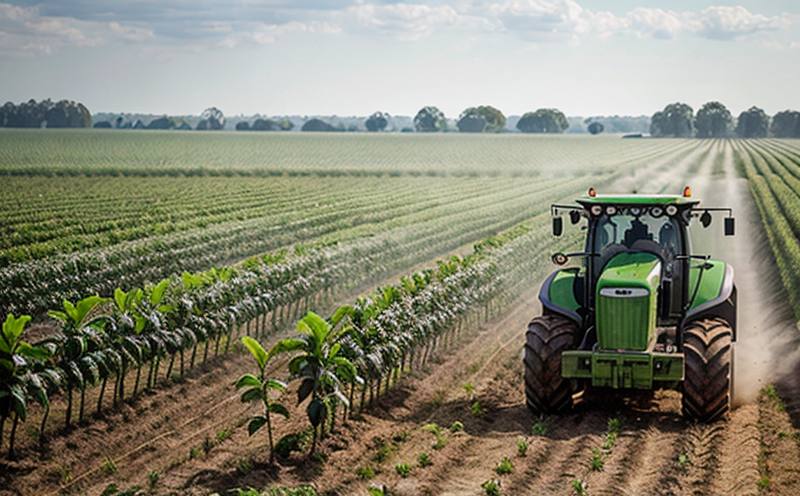AOAC 99022 Sulfite Testing in Agricultural Products
The AOAC International Method 990.22 is a widely recognized procedure used to determine the total sulfite content in agricultural products. This method is particularly important for ensuring food safety and quality, especially when dealing with sulfur dioxide preservatives commonly added during the production of fruits, vegetables, and other processed foods.
Sulfites are widely used as antioxidants and preservatives because they help prevent browning reactions and inhibit microorganisms that can cause spoilage. However, sulfites may also pose health risks to certain individuals such as asthmatics or those sensitive to sulfites. Therefore, accurate testing is crucial for regulatory compliance and consumer safety.
This method uses an oxidation-reduction reaction between the analyte (sulfite) and a potassium iodide solution in sulfuric acid medium. The liberated iodine reacts with starch indicator, resulting in a visible color change that indicates the amount of sulfite present.
To prepare samples for analysis, they must be thoroughly homogenized to ensure consistent representation across the sample batch. For this method, it is important to note that all agricultural products containing added sulfur dioxide must be analyzed separately from those naturally occurring within the product itself.
Once prepared, the samples are analyzed using a spectrophotometer or titrimetric technique which allows for precise measurement of the liberated iodine against known standards. Results obtained should comply with established limits set forth by relevant regulatory bodies like FDA or EU directives.
The AOAC 99022 procedure provides detailed steps on how to prepare samples, calibrate equipment, and interpret results accurately. Compliance ensures proper labeling and handling practices that protect consumer health while maintaining product integrity.
Understanding the importance of this method helps stakeholders in various industries understand why accurate testing is essential for ensuring safe food products. By adhering to these standards, companies can enhance their reputation for producing high-quality agricultural commodities.
Scope and Methodology
| Sample Preparation | Analysis Procedure | Calibration |
|---|---|---|
| Thoroughly homogenize samples before analysis. | Analyze using spectrophotometry or titrimetric technique after oxidation-reduction reaction with potassium iodide in sulfuric acid medium. | Calibrate equipment according to manufacturer’s instructions prior to use. |
The AOAC 99022 procedure involves several key steps which include sample preparation, analysis through an oxidation-reduction reaction involving potassium iodide and sulfuric acid, followed by calibration of instruments. Properly prepared samples undergo this process ensuring accurate readings that meet regulatory requirements.
Quality and Reliability Assurance
The AOAC International Method 990.22 has been validated through extensive research conducted under controlled conditions to ensure its reliability across different laboratories worldwide. This validation ensures consistency in results regardless of where the test is performed.
A key aspect of quality assurance lies in regular calibration and maintenance of analytical equipment used for this method. Regular audits by independent third parties further enhance trustworthiness, providing confidence that tests are conducted correctly according to established protocols.
Training staff members who perform these analyses ensures they understand all aspects of the procedure from sample preparation through final interpretation of results. Continuous education keeps professionals up-to-date with any changes or updates in methodology recommended by AOAC International itself.
International Acceptance and Recognition
- The AOAC 99022 sulfite testing procedure is accepted as a standard method across multiple countries including the United States, Canada, Australia, New Zealand, and parts of Europe.
- This method complies with international standards such as ISO/IEC 17025 for laboratory accreditation ensuring high-quality scientific research.
The AOAC 99022 sulfite testing procedure enjoys widespread acceptance among regulatory agencies responsible for overseeing food safety and quality globally. Its adoption in various regions reflects its reliability and accuracy.





